What’s The Difference Between Rattan And Wicker For Patio Furniture?
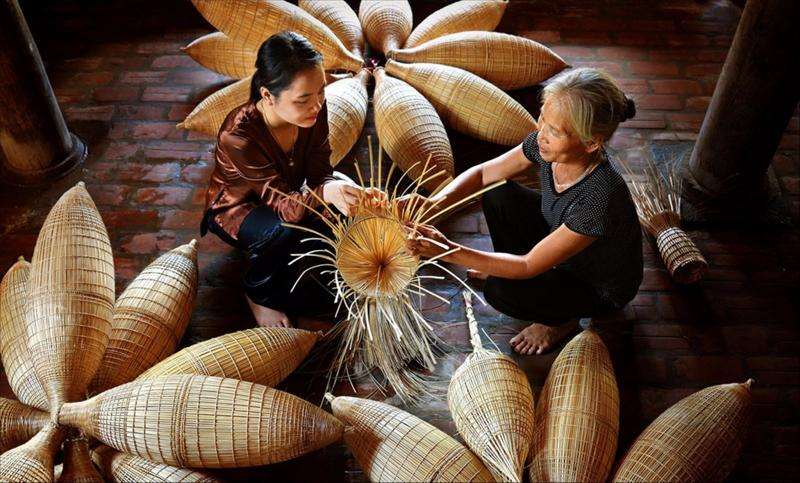
For those who love spending time with family in the backyard, what first comes to your mind when choosing materials for your outdoor furniture.
Over the last few decades, Rattan and Wicker furniture have become one of the best choices for outdoor art. However, most of us often think that “Rattan” and “Wicker” are the same terms that can be replaced for each other. But actually they are not the same.
So what is the difference between wicker and rattan? At first look, wicker and rattan pieces may look quite similar, they have some differences when it comes to their features, durability , design flexibility and pricing. Acknowledge their unique points can help you make a wide decision when choosing handmade furniture.
To be more emphasize, Rattan is a raw material (made from some palms tree) and Wicker isn’t ( its can be called as a style of weaving),
Also, Wicker furniture can be made from rattan or bamboo and several materials.
What is Rattan?
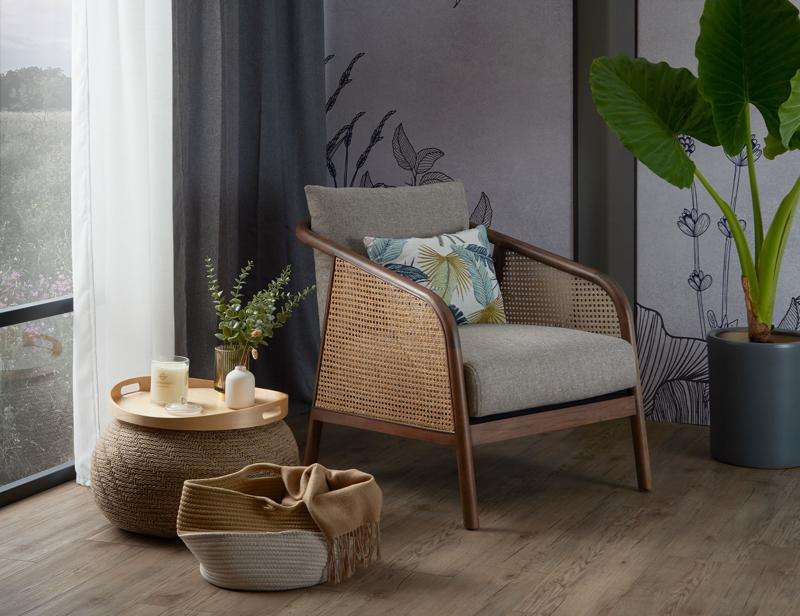
Only with a single Wicker chair already created a relaxing vibe in house corner
Rattan is usually made from palm trees. A kind of species that lives in
Southeast Asian jungle. Rattan is known as a material that is long-lasting, durable for usage and most important, its best fine for your garden. Because of that, people love choosing it for their top choice garden furniture.
What is Wicker?
For a long time ago, Wicker has been called a style of weave. It’s a technique derived from Ancient Egypt.
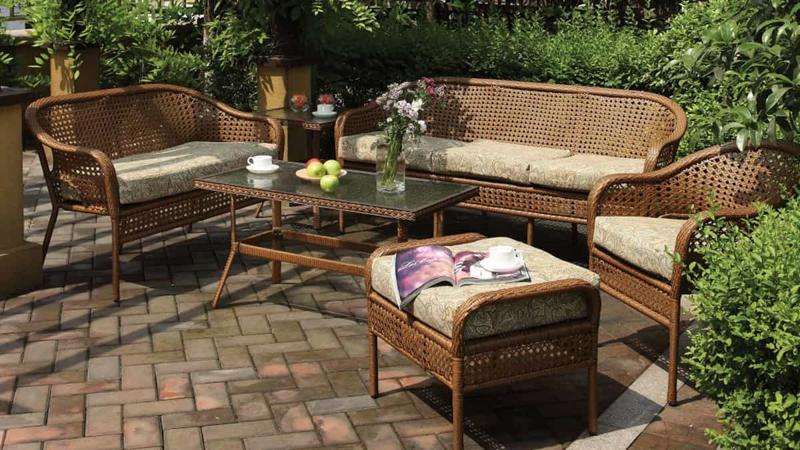
A round wicker coffee table can endure under sunlight
Although the Wicker technique has been there for around for thousands years, it popped up to be well known in the modern day thanks to the Arts and handmade craft then spread worldwide.
Wicker is often made of woven fibers but due to scarcity of typical palms. Nowadays, we can use synthetic resins to create wicker weaves.
How are rattan and wicker materials used?
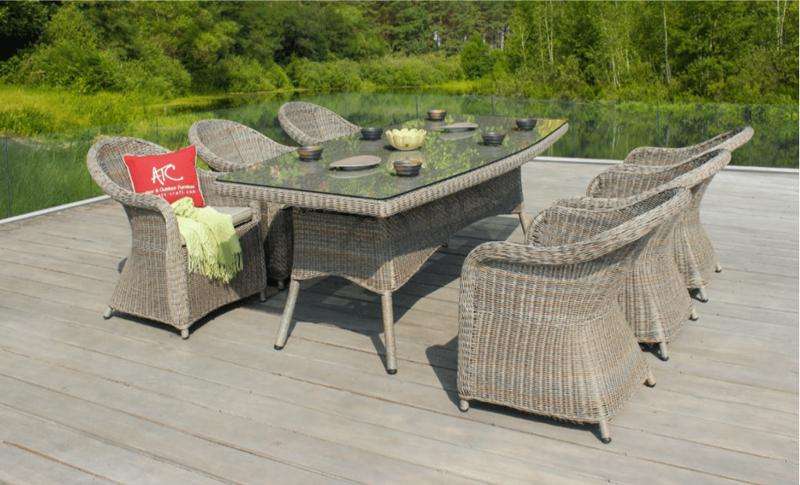
Patio furniture set is a great way to create a stylish and inviting outdoor space
Rattan and wicker commonly used for patio furniture design. For Rattan, Customers are easy to fall in love with their unique texture. Rattan products can be flexible and durable with time. It’s easy to maintain and clean and it has a reasonable price.
Furthermore, rattan can be placed both indoors and outdoors making it a very comfortable choice for in and out. You can decorate any room.
Overall, Rattan furniture is flexible, lightweight, and stylish. It’s everything you want for your garden furniture, that’s why it’s so popular.
Wicker is also famous for its unique design, but the core reason why Wicker is so attractive is that wicker furniture can be created or combined by many types of material. For instance, wicker furniture sets can indeed be composed of various materials like cane, straw, reeds, willows, and rattan itself.
Just like rattan, wicker furniture is constructed by weaving the material around a frame, which can be made of wood, metal, or even another type of sturdy material. This weaving technique allows for flexibility in design and can result in beautiful and functional furniture pieces. It can be used to create chairs, couches, benches and more.
Advantages and Disadvantages of Rattan Furniture
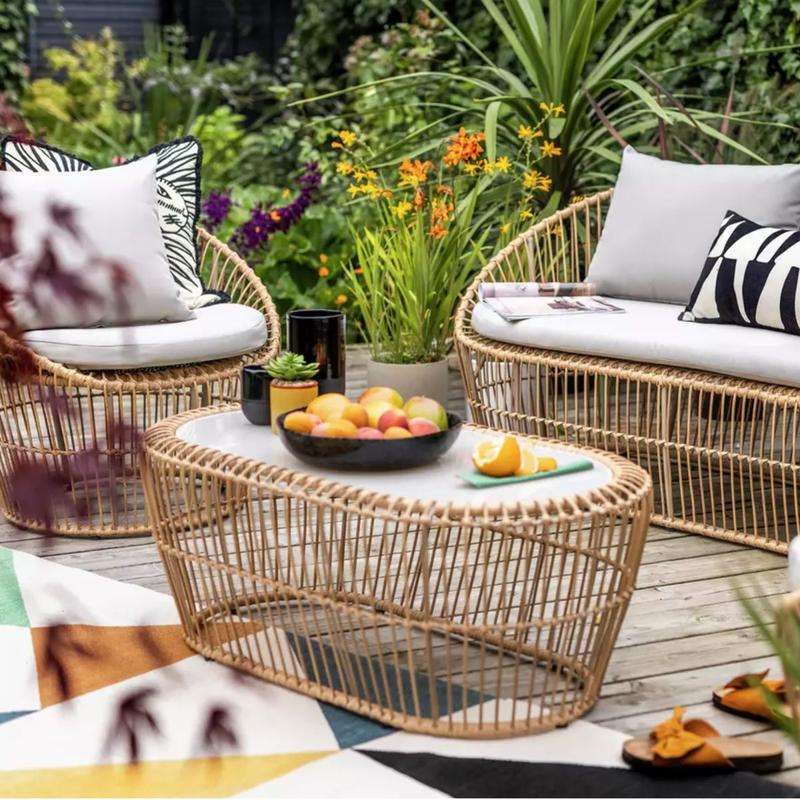
A wicker set enlightens garden view in a tea party
Pros
Durable: Rattan furniture is highly regarded for its durability, especially when used outdoors.
From nature: Rattan is a natural material derived from palm plants, known for its strength and flexibility. This inherent resilience makes it well-suited to withstand outdoor conditions such as sunlight, rain, and temperature fluctuations.
Weather Resistance: Rattan is naturally resistant to elements like humidity and UV radiation, which are common causes of damage to outdoor furniture. This resistance helps to prevent fading, warping, and cracking over time.
Low Maintenance: Rattan furniture requires minimal maintenance to retain its durability. Regular cleaning with a damp cloth to remove dust and debris, and occasional treatment with furniture polish or wax can help prolong its lifespan.
Longevity: When it is well cared for, rattan furniture can withstand through time. Its durability makes it a worthwhile investment for outdoor spaces, providing both aesthetic appeal and functional longevity.
Cons
Maintenance Requirements: While rattan is generally low maintenance, it does require occasional care to maintain its appearance and durability. Regular cleaning and occasional treatments with furniture polish or wax are recommended to prevent drying out and cracking.
Fragility of Natural Rattan: Since it’s made of natural, rattan can be relatively fragile compared to synthetic materials or other types of outdoor furniture. It may not withstand heavy impacts or rough handling as well as materials like metal or resin.
Vulnerability to Moisture: Natural rattan can be damaged by moisture and humidity. Being exposed to rain or high humidity levels can cause the rattan fibers to swell, warp, or even mold if not properly dried.
High cost: Rattan furniture itself isn’t the cheapest when we talk about outdoor furniture. If you don’t maintain it well, it could be a very expensive lifetime investment.
Despite these cons, rattan remains a popular choice for outdoor furniture due to its natural beauty, comfort, and durability when cared for properly. Understanding these aspects can help in making an informed decision about whether rattan furniture is suitable for your outdoor space.
Advantages and Disadvantages of Wicker Furniture
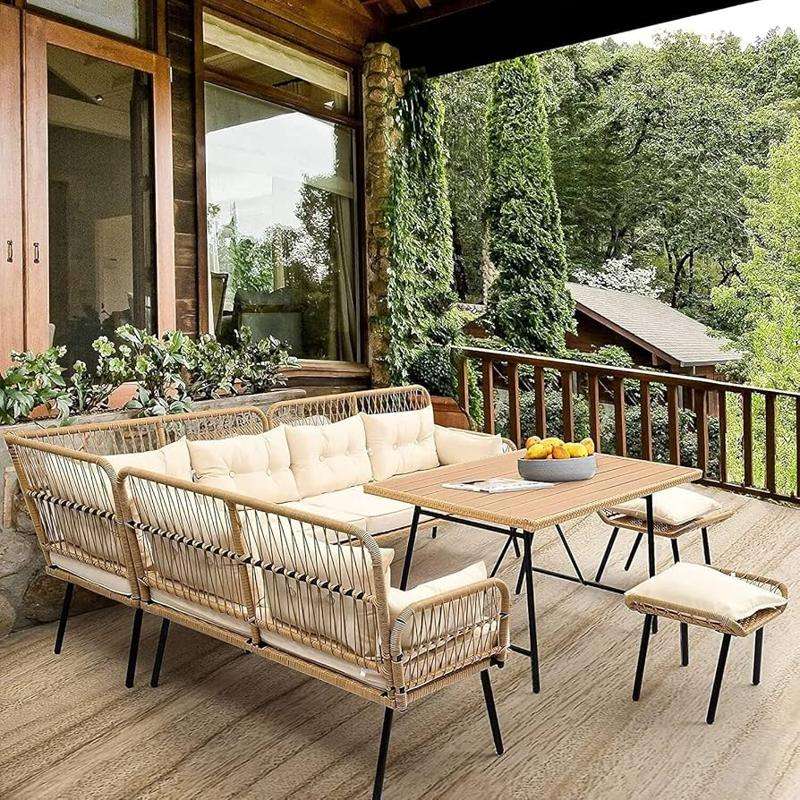
A white wicker patio set emphasized your living place
Pros
Versatility: Wicker can be woven from a variety of materials such as rattan, cane, bamboo, seagrass, and synthetic fibers. This versatility allows for different textures and designs, making wicker suitable for various types of furniture including chairs, sofas, tables, and storage units.
Lightweight: Wicker furniture is generally lightweight compared to traditional wooden or metal furniture, which makes it easier to move around and rearrange in your living space or patio.
Natural Material: Wicker is often made from natural materials like rattan or bamboo, which are renewable and eco-friendly choices for furniture.
A highlight: Wicker furniture has a natural and rustic charm that adds warmth and character to indoor and outdoor spaces. It comes in various weaves and styles, offering a wide range of design options to complement different decor themes.
Cons
Cost: High-quality wicker furniture can be relatively expensive, especially pieces made from premium materials like natural rattan. Buyers may be considering the budget.
Durability Concerns: The durability of wicker furniture can vary depending on the material and construction. Natural wicker materials like rattan or cane may be more susceptible to damage from moisture, humidity, and prolonged exposure to sunlight. Synthetic wicker, on the other hand, tends to be more durable and weather-resistant.
Weight Limitations: While lightweightness is an advantage in terms of mobility, it can also mean that wicker furniture may not be as sturdy or able to support as much weight as heavier materials like metal or solid wood.
Overall, wicker furniture offers a distinctive aesthetic and comfortable seating option for both indoor and outdoor spaces. Understanding its advantages and disadvantages can help you decide if wicker furniture is the right choice for your needs and preferences.
The Main Differences Between Rattan and Wicker
Rattan and wicker are actually refer to different aspects of furniture making

Vietnamese technique making rattan and wicker
Material vs. Technique
Rattan: Rattan refers to the material itself, which is a natural vine-like palm that grows in Southeast Asia, Australia, and Africa. It is known for its strength, durability, and flexibility, making it an ideal material for weaving furniture.
Wicker: Wicker, on the other hand, refers to the weaving technique used to make furniture. It can be made from a variety of materials, including rattan, but also other natural fibers like cane, bamboo, seagrass, or synthetic materials like resin.
Construction Method
Rattan Furniture: Rattan furniture is constructed by weaving rattan fibers around a frame to create various types of furniture pieces such as chairs, sofas, tables, and more. The focus is on utilizing rattan’s natural properties to create sturdy and durable furniture.
Wicker Furniture: Wicker furniture refers to any furniture item made using the wicker weaving technique. While rattan is a common material used for wicker furniture, wicker can also be made from other materials mentioned earlier.
Durability and Maintenance
Rattan: Rattan furniture is generally durable and can withstand outdoor conditions if properly cared for. It requires occasional maintenance to keep it clean and prevent drying out.
Wicker: The durability of wicker furniture depends largely on the material used. Natural wicker materials like rattan can be susceptible to moisture and sunlight, while synthetic wickers are often more durable and weather-resistant.
Appearance and Style
Rattan: Rattan furniture tends to have a natural and rustic appearance due to the texture and color of the rattan fibers. It often has a warm and inviting aesthetic.
Wicker: Wicker furniture can come in a variety of styles and appearances depending on the material used for weaving. It can range from traditional and classic designs to more contemporary and modern styles.
In summary, while rattan refers specifically to the natural material derived from the rattan palm, wicker is a broader term that describes the weaving technique used to create furniture. Understanding these differences can help in choosing the right type of furniture based on your preferences for style, durability, and maintenance requirements.